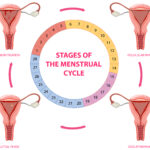FREE SHIPPING OVER $50
What are Keto Strips and How to Use Them
Embarking on a ketogenic diet is like setting sail on a voyage towards better health and wellness. But how do you know if you’re navigating the waters of ketosis effectively? Enter keto strips, the compass that guides keto enthusiasts towards their goals.
Key Takeaways
Understanding Keto Strips

Keto strips, also known as keto test strips or ketone strips, are akin to litmus paper used in chemistry experiments. They’re small, thin pieces of plastic, similar to a pregnancy test strip, coated with a particular type of reagent that reacts to ketones in the urine.
When your body enters a state of ketosis, it switches its fuel source from glucose to fat. As your body breaks down fat for energy, it produces byproducts called ketones. These ketones circulate in your bloodstream and some get excreted in your urine.
This is where keto strips come into play. They’re designed to detect these excreted ketones in your urine. When you dip a keto strip into a urine sample, the reagent on the strip reacts with any ketones present and changes color. The resulting color gives an indication of the concentration of ketones in your urine, and by extension, an estimate of the level of ketosis in your body.
It’s important to note that while keto strips provide a quick and easy way to check if you’re in ketosis, they’re not always 100% accurate.
How Do Keto Strips Work?
When your body enters ketosis, it starts to produce ketones. These ketones spill over into various areas of the body, including your urine. Keto strips are designed to detect these ketones. When you dip a keto strip into your urine, the reagent on the strip will change color if ketones are present. The darker the color, the higher your level of ketosis.
How to Use Keto Strips
Using keto strips effectively requires a bit of know-how. Here’s a more detailed guide:
- Collect a urine sample: Use a clean container to collect a small amount of urine. This should be done in the privacy of your bathroom.
- Dip the keto strip: Immerse the end of the strip into the urine sample. Make sure the reagent area of the strip is fully submerged.
- Wait for the color change: After dipping the strip, wait for about 10-15 seconds. The strip will change color based on the ketone levels in your urine.
- Read the results: Compare the color of the strip to the color chart provided on the package. This will give you an estimate of your ketone levels.
How to Read Keto Strips
Reading keto strips involves comparing the color of the strip after it’s been dipped in urine to a color chart. Interpreting the results from keto strips is crucial to understanding your state of ketosis. Here’s a more detailed explanation:
- Check the color chart: Each package of keto strips comes with a color chart. This chart ranges from light (few ketones) to dark (many ketones).
- Compare the strip’s color: After waiting the recommended time, compare the color of the strip to the color chart. The closer the color is to the darker end of the spectrum, the higher your ketone levels.
- Understand the results: A darker color indicates that you’re in a state of ketosis. However, very dark colors could indicate dehydration, so it’s important to stay hydrated while on a ketogenic diet.
Interpreting Keto Strip Results
- Negative: If the strip remains the same color as before or shows only a slight change, it indicates a low level of ketones in the urine, suggesting that you may not be in ketosis.
- Trace: A faint color change on the strip may indicate trace amounts of ketones in the urine, suggesting you are in the early stages of ketosis.
- Moderate: A moderate color change indicates a moderate level of ketones in the urine, signaling that you are likely in a deeper state of ketosis.
- Large: A significant color change, often ranging from pink to purple, suggests a high concentration of ketones in the urine, indicating a robust state of ketosis.
Other Ways to Check your Ketone Levels
While keto strips are a popular method, they’re not the only way to check your ketone levels. Here are some alternatives:
- Blood Ketone Meter: This device works similarly to a glucose meter. It uses a small blood sample to measure the amount of beta-hydroxybutyrate in your blood, the primary ketone body produced during ketosis.
- Breath Ketone Analyzer: This device measures the amount of acetone, a byproduct of ketosis, in your breath.
The Accuracy of Keto Strips
Keto strips provide a quick and easy way to check if you’re in ketosis. However, their accuracy can vary:
- Hydration Levels: Your hydration status can affect the concentration of ketones in your urine. If you’re dehydrated, the ketone concentration may be higher, leading to a darker reading. Conversely, if you’re well-hydrated, the concentration may be lower, leading to a lighter reading.
- Time of Day: Ketone levels can fluctuate throughout the day, so the time of day you test can affect your results.
- Diet and Exercise: What you eat and how much you exercise can also affect your ketone levels.
FAQs
Yes, hormonal changes during menstruation can impact ketone levels, potentially leading to lower readings on keto strips.
Yes, keto strips can expire. Check the expiration date on the packaging and store them properly to ensure accurate results.
Keto strips detect ketones in urine using a chemical reaction. The strip changes color based on the concentration of ketones present.
You can tell if your ketone strips have gone bad when they just quit working. Check the expiration date and look for signs of damage or discoloration on the strips.
Conclusion
Ketone test strips are a handy tool for those following a ketogenic diet. They provide a quick and easy way to check your ketone levels, helping you stay on track with your health and fitness goals. However, they’re not a definitive measure of ketosis, and other factors such as hydration levels can affect the results. Therefore, it’s always best to use them in conjunction with other methods and consult with a healthcare professional.







